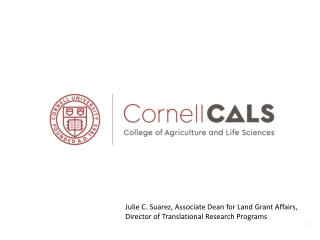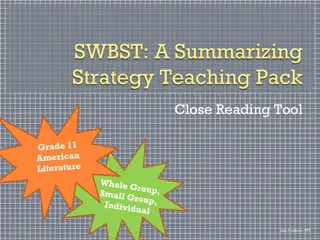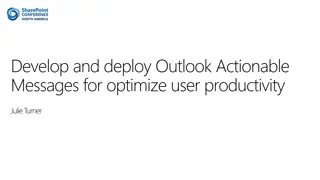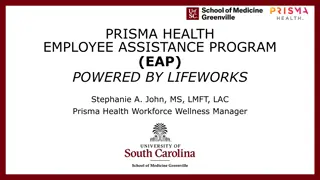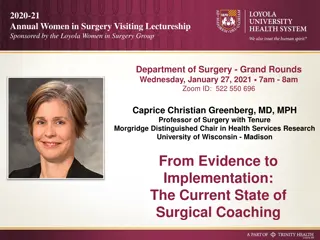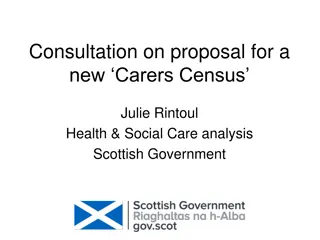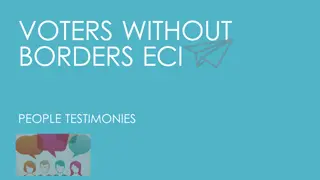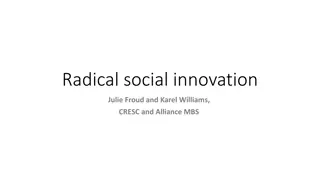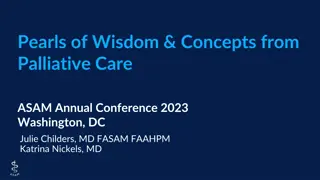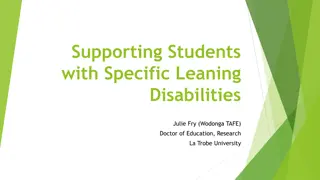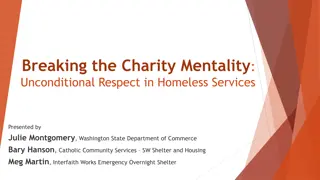
Gender Lens Insights on Economic Growth and Entrepreneurship Promotion
Explore the importance of viewing economic growth and entrepreneurship through a gender lens, emphasizing inclusivity and addressing gender-specific risks and vulnerabilities. Insights are provided on promoting women's entrepreneurship, social protection, and lessons from programs like Ethiopia's PSNP.
Download Presentation

Please find below an Image/Link to download the presentation.
The content on the website is provided AS IS for your information and personal use only. It may not be sold, licensed, or shared on other websites without obtaining consent from the author. If you encounter any issues during the download, it is possible that the publisher has removed the file from their server.
You are allowed to download the files provided on this website for personal or commercial use, subject to the condition that they are used lawfully. All files are the property of their respective owners.
The content on the website is provided AS IS for your information and personal use only. It may not be sold, licensed, or shared on other websites without obtaining consent from the author.
E N D
Presentation Transcript
Inclusive Economic Growth revisited The importance of a gender lens Saskia Vossenberg & Julie Newton Africa Day 2015
Through a Gender Lens Early Childhood Revealing what is omitted Pointing towards what is needed and who should be involved School Age Old Age Gendered risks & vulnerabilities Three critical points 1. Life cycle perspective 2. Beyond roles to relational 3. Systems Working Age Youth
Close reading the letter Positive Recognition of exclusion and inequality as morally wrong Explicit mentioning female entrepreneurs to benefit from Dutch policy Recognition of Social Protection as an important instrument Missing, omitted, assumed Unclear who or what needs to change? The poorest as economic beings and resources regardless of context Economic growth automatically benefits individuals regardless of position Financial capital: what about other needs?
Gender Aware Womens Entrepreneurship Promotion: lessons on what works where for whom Country and household context Access to child care The very poor need more What women want? No cash but in-kind assistance Combat discrimination and exclusion in laws, regulations + culture Engage men Deliberate outreach and inclusion in programme implementation Women Business Networks
Social protection from a gender lens: lessons from Ethiopias PSNP Design features: Lessons: Individual: increased HH consumption, more income security, gains in social capital LIFECYCLE approach: recognises women/men have different physical capacities, women have greater work burden, women with small children need special provision to work, FHH are more labour poor Intra-household: mixed results, no impact on unequal DM, flexible working hours not always offered Components: equal wages for men/women direct support for PLW childcare facilities at worksites flexible working hours women s equal rep on committees public works used to create assets to reduce women s time s poverty + cultivate FHH land (e.g water points, fuel wood sources to reduce girl/women time poverty) Community: min impact, limited women involvement in programme governance Addresses women s practical gender roles, but not strategic gender interests
Recommendations Incorporate a gender lens (not a tick the women s box ) in programme implementation and monitoring. Be strategic and look for complementary linkages: involve and target multiple actors (including men) and ensure linkages between private sector, women s (business, civil society, activist) organizations, and existing government interventions. Invest, sensitize and build the capacity of all the implementers and drivers of the plan of action. Invest in gender sensitive monitoring and evaluation: Collect sex + age disaggregated data and monitor Measure changes in individual men and women s needs and positions within households, businesses, value-chains, markets, etc. (at the individual level). Invest in thorough evaluations of this plan of action and ensure that the poorest groups themselves can determine and assess the criteria for successful inclusiveness Encourage and support effective governance and accountability systems 1. 2. 3. 4. 5.
Thank you J.Newton@kit.nl vossenberg@iss.nl www.kit.nl/gender/gender-resource-facility

